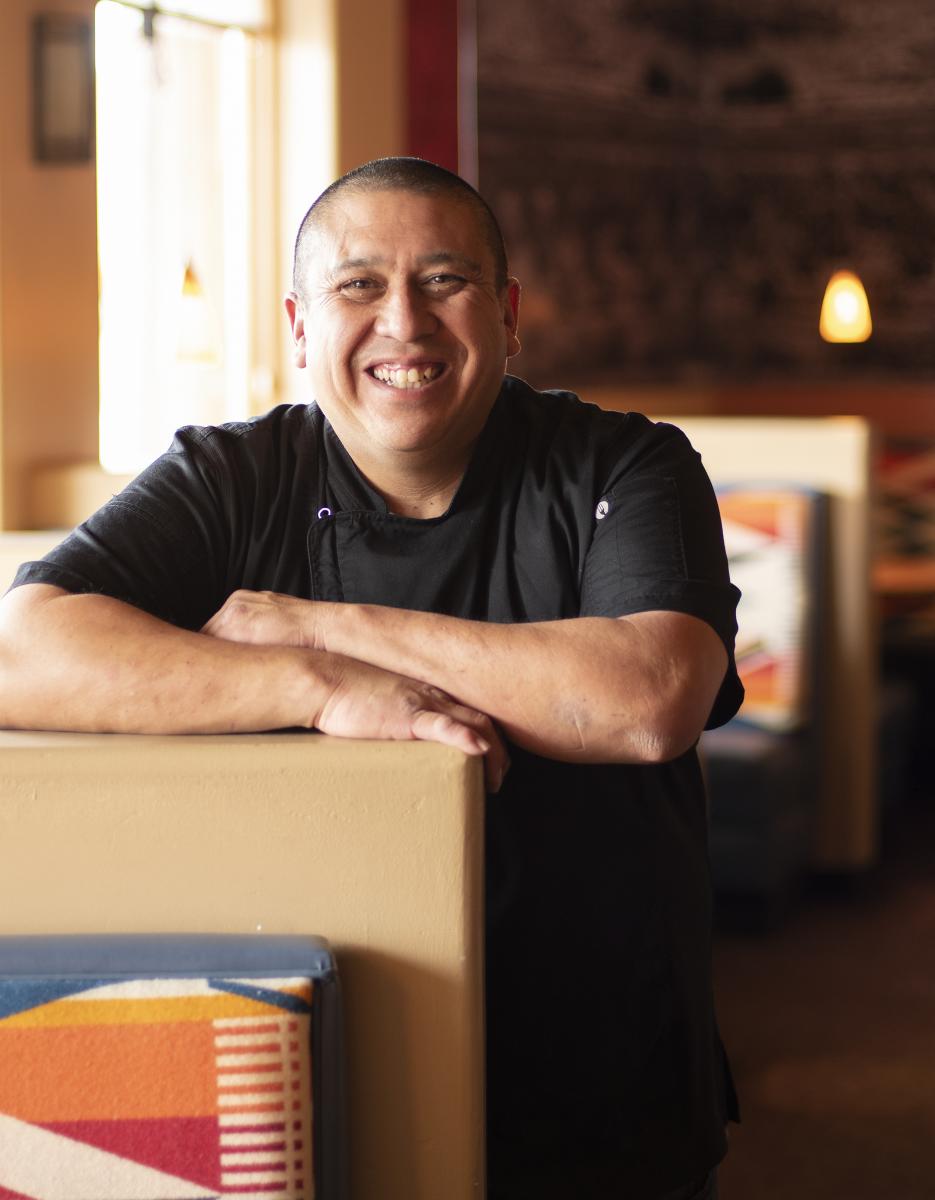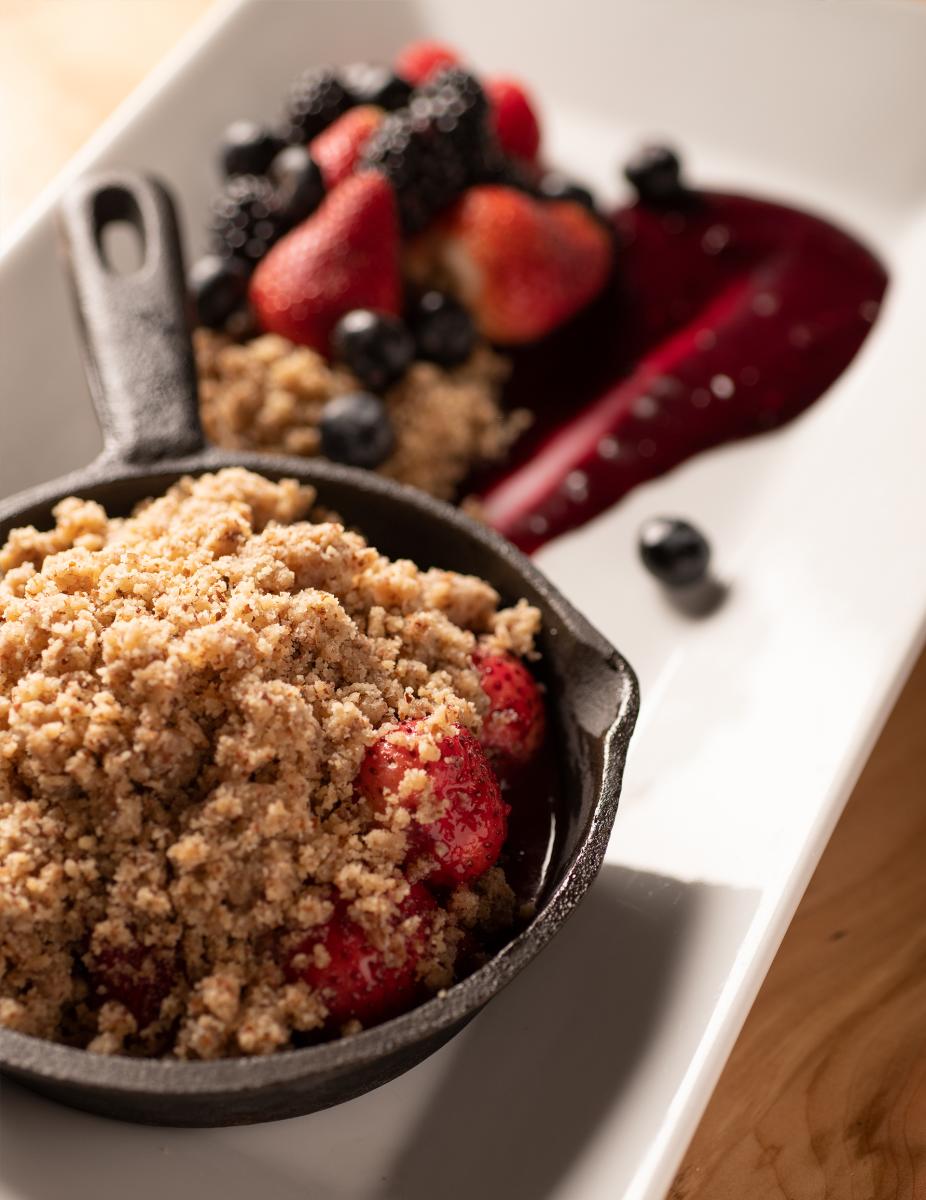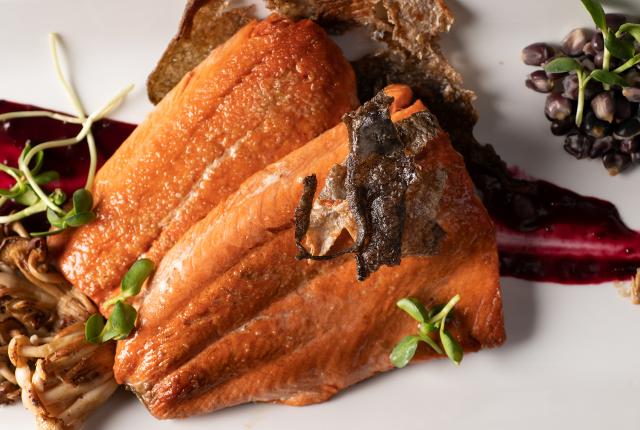Chef Ray Naranjo’s Pante Project highlights Indigenous ingredients such as salmon, nixtamalized blue corn, and sunflower seeds.
WHEN RAY NARANJO took over as executive chef at the Indian Pueblo Cultural Center’s Pueblo Harvest Restaurant in January 2020, he had grand plans. “I was going to roll out the new menu in February,” he says. “We rolled it out for one day.”
When the pandemic slowed the restaurant industry to a near stop, everyone was forced to find new ways to serve food safely and keep their business afloat. At the Albuquerque restaurant, Naranjo (Santa Clara Pueblo and Odawa) got busy developing the Pante Project, a once-a-month culinary adventure showcasing the depth of his Indigenous food knowledge. Each carryout, finish-at-home dinner, which he calls “a prayer,” focuses on a direction or region of the country, a corresponding corn color, and precontact Indigenous ingredients.
In an accompanying video, Naranjo explains the cooking methods and cultural significance of the ingredients. “Food is the first being that you’re introduced to in a culture,” he says.
The project launched in November with a three-course dinner featuring blue corn and the Pacific Northwest—home to tribes like the Hupa, Suquamish, and Tulalip—where salmon is an important part of life and culture. And you bet, I bit.
 Chef Ray Naranjo took over as executive chef of the Indian Pueblo Cultural Center's restaurant in January 2020.
Chef Ray Naranjo took over as executive chef of the Indian Pueblo Cultural Center's restaurant in January 2020.
The first course, a smooth squash bisque topped with toasted pumpkin seeds, was one of the best squash dishes I’ve ever tasted. “What I focus on doing is letting that ingredient be the ingredient,” says Naranjo. “I’m highlighting rather than overspicing.” Cedar-smoked salmon with crispy skin and a blueberry-maple gastrique was accompanied by nutty, sweet, and savory nixtamalized blue corn and truffle-scented roasted mushrooms. For dessert, Naranjo served wild berry compote with an acorn flour crumble that added texture and nuttiness to the subtly sweet mix.
In 2013, Naranjo and 14 other Pueblo volunteers took part in the Pueblo Food Experience, an “experiment” led by Santa Clara Pueblo sculptor Roxanne Swentzell that resulted in The Pueblo Food Experience Cookbook: Whole Food of Our Ancestors. Volunteers ate a precontact Pueblo diet for three months and documented their health changes. It was a turning point for Naranjo. “That’s what pretty much sparked the interest to work with Native foods,” he says. “A lot of it was realizing that this area, this part of New Mexico, is really more part of Mexico.”
His perspective of global cuisine changed, too. He realized that many important ingredients in traditional and contemporary fare around the world—like potatoes, chile, corn, beans, squash, and chocolate—have Indigenous roots. “I look at a plate of Italian food,” he says. “That’s not Italian food when I look at it. That’s Native American fusion. The reality is, it’s fusion because it has Indigenous ingredients in it. I think the real stories of these foods need to be told.”
In the reimagined restaurant—now called the Indian Pueblo Kitchen, with a goal of opening this spring—Naranjo plans to better align the cuisine with the cultural center itself. “Some of the dishes will have historical aspects and will tie in with the story,” he says.

Acorn flour crumble adds texture and nuttiness to the subtly sweet wild berry compote.
An open, modern kitchen will feature fresh produce from the center’s Resilience Garden and showcase feast day goodies like red chile stew, tamales, and Pueblo bread. By October, Naranjo hopes to share his culinary knowledge at a new commercial teaching kitchen in the nearby Indian Pueblo Opportunity Center.
“The goal of the opportunity center is to create a space for artisans and small-scale farmers,” says Beverlee McClure, vice president of cultural and community engagement for the IPCC. “The whole thing is to really create more Native entrepreneurs and break down any barriers they may have.”
Food entrepreneurs will have access to the commercial kitchen, greenhouse, garden, and seed bank, as well as culinary training, all supported by proceeds from the Indian Pueblo Kitchen. “I think it’s important to show there are other career paths for Native people,” Naranjo says. “I’m humbled and honored to have this role. Leading the way also comes with a lot of hard work.”

Indian Pueblo Kitchen, 2401 12th St. NW, Albuquerque; 505-843-7270
Read More: The revised edition of Indigenous recipes delivers new information on diet and fitness.


